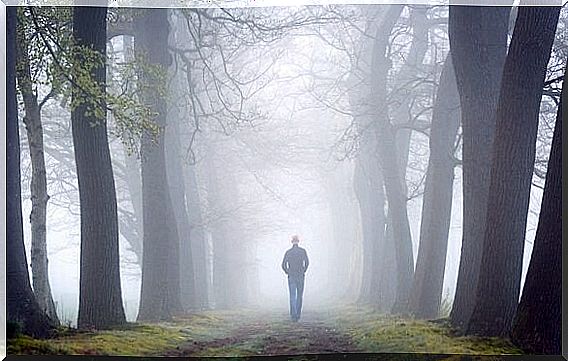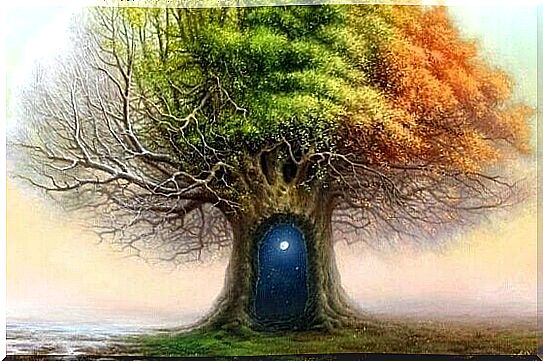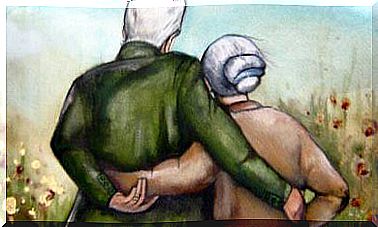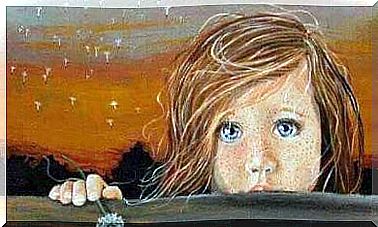Forest Test And Its Relation To Psychoanalysis

Obstacles and irritations take away our happiness, our ingrained fears, and the values that govern our choices and behaviors. The forest test seeks to clarify and interpret these problems based on the approach from which it got its name: relationship psychoanalysis. According to this theory, our mental suffering comes from the underlying problems that we need to bring back to light to heal the hurt feelings and move forward.
For those who have not heard of this relationship test, we should first say that it is by no means traditional. The forest test does not have enough credibility and accuracy to be part of normal clinical research. However, we cannot rule out its relevance in the context and the theoretical framework from which it was created. Definitely worth considering.
Relationship psychoanalysis
Relationship psychoanalysis is a modern form of psychotherapy that has the advanced features of psychoanalysis we already know. Its main goal is to promote people’s spiritual development. So it has to deal with those obstacles and blockages that limit us and cause us pain. In such an approach, and as just one example, the classic concepts of id, ego, and superego are left out.
The purpose of relationship psychotherapy is to “rebuild” the patient. With this in mind, the Therapist will guide the patient so that the patient can communicate and identify with their environment in a healthier way. He instructs the patient to watch the world boldly from every angle. In addition, he helps the patient travel to those dark areas of his mind that he has never dared to go before. For this reason, the forest test is a good effort tool to get to know the underlying characteristics of the patient.

What does the forest test evaluate and where does it come from?
Instead of competence or ability, the forest test seeks to study the human emotional world. We have already talked more than once in our blog about so-called projective tests. A couple of examples of these are the tree test or the family test. They are essentially psychological tools designed to complement assessment.
They, when used alone and exclusively, can never be a valid means of assessment. Other methods such as interviewing, observation, and other psychological tests that have been shown to be reliable and accurate are also needed. All of this is done to achieve a sufficient diagnosis or starting point from which to begin the procedure. In the relationship psychoanalytic approach, this test is used more than anything else for the following reasons:
- It reveals the mental state of the patient.
- It allows the patient to see potential unresolved childhood conflicts as well as the burden of the past in their own presence.
- We notice development strategies.
- It brings out strong values.
- Important people in the patient’s life are revealed.
- It brings out a person’s fears.
- It shows the patient’s personal desires and expectations.
The forest as a tool for psychoanalysis
The forest is a scenario with a very clear mystical and spiritual meaning in any culture. Carl Jung himself explained it in his book “The Collective Subconscious and Its Archetypes”. He showed that in such scenarios, the hidden dangers and fears of our lives can be found. In a way, traveling through them sometimes means going back to the time of our ancestors, where we rediscover the deepest parts of our being.
In psychoanalysis, the forest is considered a reflection of the subconscious. It is a symbolic relationship that sometimes manifests itself in our dreams, where many of our phobias arise. These include fear of the dark, fear of falling or falling into a cavity, and fear of insects or wildlife.

How is the forest test used?
The forest test begins with visualization. The therapist guides the patient with each question and then notes the conclusions of his or her answers. The test is simple. One only needs to create a comfortable and safe environment so that the person can naturally go through the inner journey.
The first step is to ask the patient to visualize the forest. A quiet setting surrounded by trees and where the patient walks alone. When he is able to see himself there, the analyst asks the following questions:
- Are trees very rare? Is it a dense, confusing forest or is there some order?
- Can you walk easily or do you have to overcome many obstacles?
- Is it day or night?
- Is the forest prosperous or burned or on the verge of death?
- When you walk alone, you will find the key. What do you do with it?
- Keep walking, you will run into an animal. What animal is it? Does it threaten you? Are you afraid to approach it? You arrive at the cottage. You knock on the door and someone opens it. Who is that person?
- Finally, imagine yourself stepping into a cottage. You are inside and everything is suddenly lost. Everything is empty for a few seconds as you arrive at another place. Tell me what that other place is. Tell me what you see and how you feel.

Summary
Forest test questions can shape a highly revealing inner journey. If the patient cooperates and performs the exercise matter-of-factly and feels part of it, the analyst gets a lot of useful information.
We can get inside the patient’s mental state based on the shape and state of the forest (whether it is burned, whether it is night, and so on). We are able to see hidden fears, the most important people in a patient’s life, and the most important scenarios. This information, combined with interviews and other tests, can be a great benefit for relationship psychoanalytic therapists.









